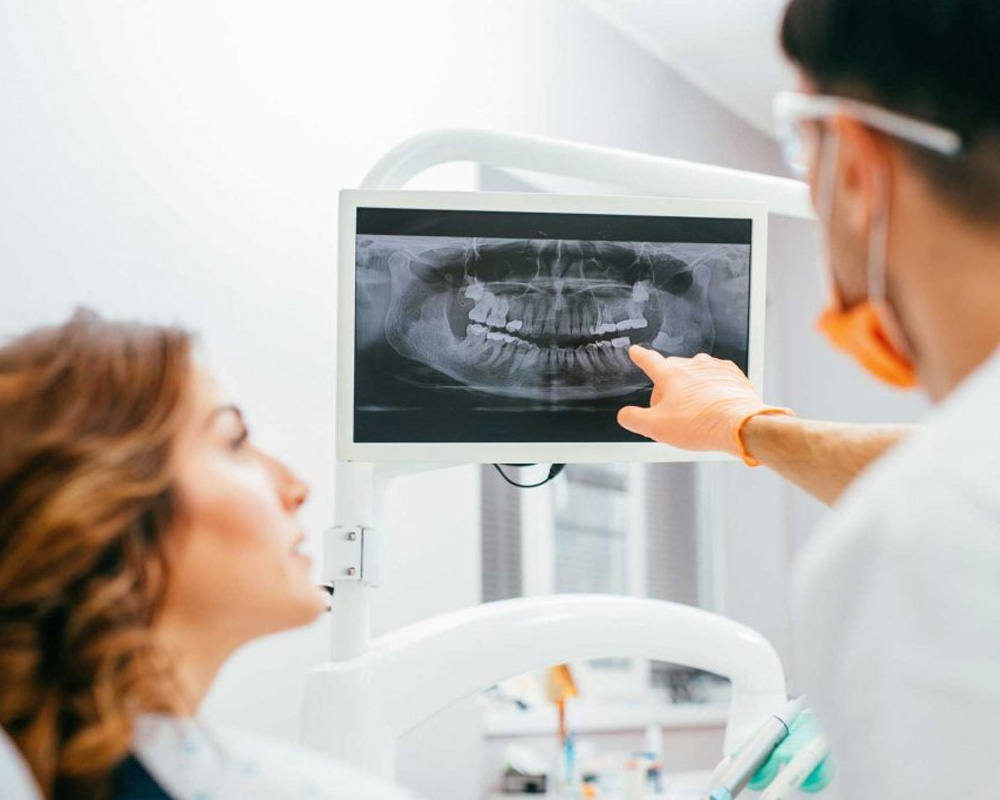One of the questions most frequently asked in dental offices is “do I really need these dental x-rays.”
Patients are most concerned with the safety of x-rays, the cost and necessity of x-rays, and finally why it
often seems like so many x-rays are taken.
X-ray Safety
Patient safety is a main priority of our practice, so this issue will be addressed first. At Yost Dental
Group, we use an x-ray principle recommended and endorsed by the American Dental Association called
ALARA. This means “As Low As Reasonably Achievable.” This simply means that we take the least
amount of x-rays to provide the necessary diagnostic information for each patient. There is not a
standard, cookie cutter frequency for taking x-rays. Most people with healthy teeth and gums may only
need new x-rays once a year. Some people, as a result of their dental issues, may need x-rays more
frequently. Dr. Yost and his hygienist develop a custom-made plan for every patient as to what types of
x-rays and how often they are needed for every patient based on their individual needs.
Technology has provided the single most significant improvement in x-ray safety. In the past, x-rays
required higher amounts of radiation to create an image on a traditional x-ray film. With the
development of super-sensitive digital x-ray sensors, a far superior, higher quality image can be
obtained with 80-90% less radiation compared to traditional film x-rays.
Radiation exposure from dental x-rays is very minimal. Radiation is naturally found in the environment
all around us, and we are exposed to it every day. We are exposed to radiation from the sun, watching
television, our cell phones, a plane ride, and even while eating some foods. Radiation exposure is
measured in milliseiverts (mSv). We are exposed to approx. 0.008 mSv during one day in the sun. A
series of annual bitewing x-rays results in a radiation exposure of only 0.005 mSv radiation (less than the
exposure from one day in the sun.) Medical x-rays require significantly more radiation. In fact, a chest
x-ray requires 10x more radiation than a dental x-ray. Many patients want to compare dental x-rays to
medical x-rays, but as you can see, dental x-rays use way less radiation.
X-ray Uses
X-rays are an absolutely essential part of our ability to provide our patients with comprehensive and
minimalistic dental treatment. During a routine dental examination, we are actually only able to see a
fraction of your teeth and gums, because so much is hidden in between the teeth and under the gums.
It is generally impossible to see with our eyes if there is an abscess on a tooth, a defect in the supporting
bone holding the teeth in place, if there are impacted teeth, or if there might be a cyst in the bone or
around teeth.
In fact we can’t even see 40% of the surfaces of the teeth in your mouth! We can see the front, back,
and top of the tooth, but we can’t see in between the teeth to know if there might be a cavity. Cavities
in between the teeth usually have to become very large before they can be seen clinically without an x-
ray. Once this happens, a crown and possibly a root canal may be necessary to fix your tooth, making
your treatment more expensive and more invasive. If the cavity have been found with an x-ray while it
was still small and just starting to form, a small, inexpensive filling may have fixed the tooth. X-rays in
the long run help to save more of your natural tooth, save your money, and may help you avoid a
complicated dental procedure.
X-ray Types
During your annual physical, your medical internist may order several different blood tests to test for
different issues. A CBC panel may be ordered for a general assessment of your health. However, a
different blood test is done to evaluate your thyroid, another blood test to evaluate your kidneys, and
still another blood test is done to evaluate for diabetes. Similarly, there are several types of x-rays that
may be taken depending on what part of the teeth or mouth is being evaluated. A few of the more
common types of x-rays used in dentistry are:
- Bitewing X-rays – These are probably the best known and most frequently taken x-rays.
Bitewing x-rays are usually two or four x-rays taken during your teeth cleaning and check-up
appointment. These x-rays are important because the help identify teeth cavities, cavities in
between the teeth, cavities around existing filling or crowns, and areas of bone loss or gum
disease. - Periapical x-ray – This a single x-ray of two or three teeth. This x-ray is different than a bitewing
x-ray because it shows the entire tooth all the way to the tip of the root in the bone. The tip of
the root is where an abscess forms, so this x-ray is usually taken before any major treatment is
started to make sure there is no infection. These x-rays are also used to evaluate for cavities,
bone loss, gum disease, and cracked teeth. - Panoramic x-ray – This x-ray gives a sample of the entire mouth, including both the upper and
lower jaws, in one single x-ray. Although the panoramic x-ray is not as clear and sharp as a
bitewing or periapical x-ray, it shows areas that these other x-rays physically can’t. The
panoramic x-ray is used to evaluate wisdom teeth, missing or impacted teeth, orthodontic
crowding or spacing, and cysts or cancer in the jawbone. - CBCT – This stands for Cone-Beam Computed Tomography. CBCT is the newest type of x-ray
used in dentistry and is more like a medical CT. CBCT provides a three-dimensional view of the
mouth instead of the standard two dimension view of other dental x-rays. A CBCT is often taken
to provide a 360 degree view of the mouth, teeth, bone, and nerves during implant placement,
wisdom teeth removal, evaluating more complex root canals, and a more detailed evaluation of
a tooth problem that may not be visible on a two dimensional x-ray.
Depending on your individual circumstances or symptoms, we may recommend any of these x-rays to
help determine any problems and the necessary treatment options.
For More Information
If you have any questions for Dr. Yost about dental x-rays, or your dental health in general, please click
the button below to submit your question.

